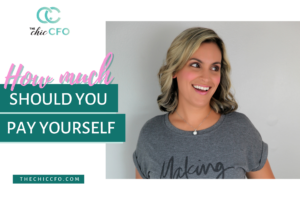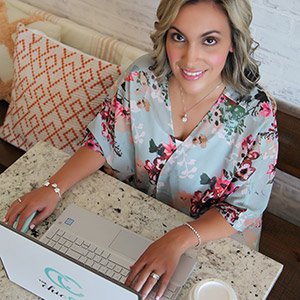What does ‘Closing your books’ actually mean?
Well, simply, it’s the process of finalizing your financial records over a set period of time. In an ideal world, I’d have you closing your books every month. But as tax season is upon us, I want to help you accurately close your books for the year just gone.
I want you to pay the taxes you owe, and I’ve talked about the reasons you need to be paying your taxes before. I only want you paying the correct amount of taxes though. Not a penny more!
If you’re not correctly closing your books, you’re likely to end up paying the wrong amount of taxes which can either leave you out of pocket, or facing the wrath of Uncle Sam.
Closing your books correctly equals accurate financial data; the data you need to be using to make strategic business decisions. Numbers don’t lie, but you do need to know what the numbers are!
If you don’t know what’s going on in your bank account, you don’t know what’s going on in your business…
Step One: Record your Revenue and Expenses:
The very first step to closing your books is to go through every bank statement for your business accounts or credit cards and record all of your income and expenses. My free Profit Plan tool will really help with this first step.
I want you to be really careful with recording your revenue. Not every deposit into your business bank account is income. Maybe you transferred some money from a personal account. Maybe you moved something from another business account.
These are not payments to your business, and if you include them as revenue, you’re over-inflating your income. Which means more tax…
On the flip side of this, I want you to make sure you’re recording enough revenue. If you use a payment processor such as Stripe, the amount deposited into your account isn’t the full amount you’ve been paid – they take their fees first.
Log in to your Point of Sale software and record the exact gross amount paid to your business – the fees will be included as expenses.
Recording business expenses is easy, but you need to be honest. Your mani-pedi (even if you paid for it with your business card) is not a business expense.
Step Two: Reconcile your accounts
Reconciling your accounts can sound like scary business jargon, but it is essentially making sure your revenue and expenses match your accounting software records.
Go through each business account statement, item by item, and make sure it is recorded on your QuickBooks or Cubio. If it’s not, you need to add it (watch the live training on YouTube for steps on how to add to QuickBooks manually.) If it’s in your statements but not your accounting software, add it. If it’s on your accounting software but not your statements, delete it.
This is where matching your income to your point of sale software is so important. If Stripe recorded that you received $1000, but they took their $5 fees, that means they deposited $995 into your account. Whilst recording $995 as your revenue isn’t committing tax evasion, it is likely to trigger a flag when Stripe report your revenue to the IRS. This means that, even though your taxes will be correct, you’re more likely to be audited. And we don’t want that…
Step Three: Check for Liabilities
I know some of you may have loans or lines of credit with your bank. You need to split these liability repayments into principal and interest, because it’s only interest that you can expense. My live training on YouTube will explain how you can split this easily in QuickBooks.
Step Four: Don’t Neglect your Personal Accounts!
However well-intentioned you’ve been with separating business and personal finances this year, there’s likely to be something you accidentally paid for using your personal funds.
If you’re QuickBooks savvy, you can enter that information. But if not, simply put the item, amount and description into a spreadsheet for your tax preparer. I encourage you to make sure your tax preparer does a ‘Tax Return to Book’ adjustment before filing your return.
Step Five: Go through Accounts Payable, Accounts Receivable and Inventory.
Accounts Payable is everyone you owe money to. If you end the year with $20000 in your bank, but have expenses totalling $22000, that takes away the magic a little. Go through vendor accounts and see what you need to pay, and whether it is outstanding or to be paid in future.
Similarly, Accounts Receivable is all outstanding monies owed to you. Who do you need to chase for payment?
If you’re a product based business, I would also strongly recommend going through your inventory and letting your tax preparer know the total dollar amount of stock you have.
The end of the tax year is always a good time to get on top of this information if you’re not doing it monthly.
If you deal with sales tax in your business, you also need to log in to the website where you make sales tax payments and make sure your records match theirs.
Step Six: Payroll
This relates to your employees and not contractors. If you’re not using payroll software, I strongly recommend Gusto, which you can sign up to here (my affiliate link).
The amount debited to employees is net payroll – you need to be recording your gross payroll wages. Make sure, whichever system you use to close your books, you are recording the gross payroll amount.
You’ll see two amounts leave your account – net payroll and tax debit. The sum of these two amounts is the gross payroll you need to record.
Final Step: Recording Depreciation
This relates to tangible items purchased for your business as a means to generate more income. You might have bought a fleet of vans for your cleaning business. Maybe you purchased a load of sewing machines. Whatever it was, you need to sync up with your tax preparer because these need to be expensed in a specific way.
Close Your Books by January 31st!
This deadline isn’t arbitrary – it’s because 1099s are due by this date. I don’t want you to be issuing 1099s to contractors with the wrong numbers on them, because this impacts their taxes too. It’s just not respectful.
The only way to make sure your 1099s are correct is by closing out your books, so the earlier you can do this, the easier it will be!
I get that all things tax and finances can be hugely overwhelming, so I am here to help answer your questions, or even do the work for you. You can contact me anytime through thechiccfo.com or denai@thechiccfo.com.
If you want to DIY your finances, first off I am so proud of you! You can get my amazing Know Your Numbers Now template for only $27; all the calculations are in there for you and you can be confident knowing your financial records are accurate.
You can watch the live training for Closing your Books on YouTube, which I highly recommend to help with those smaller details.
Together, we can make this your best tax season yet!
Also, check out my website to learn more!






